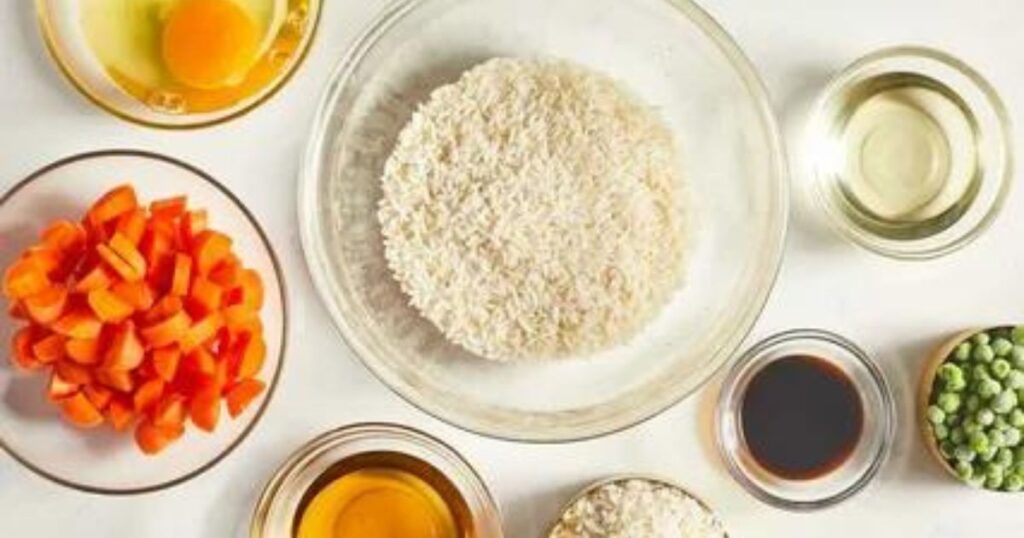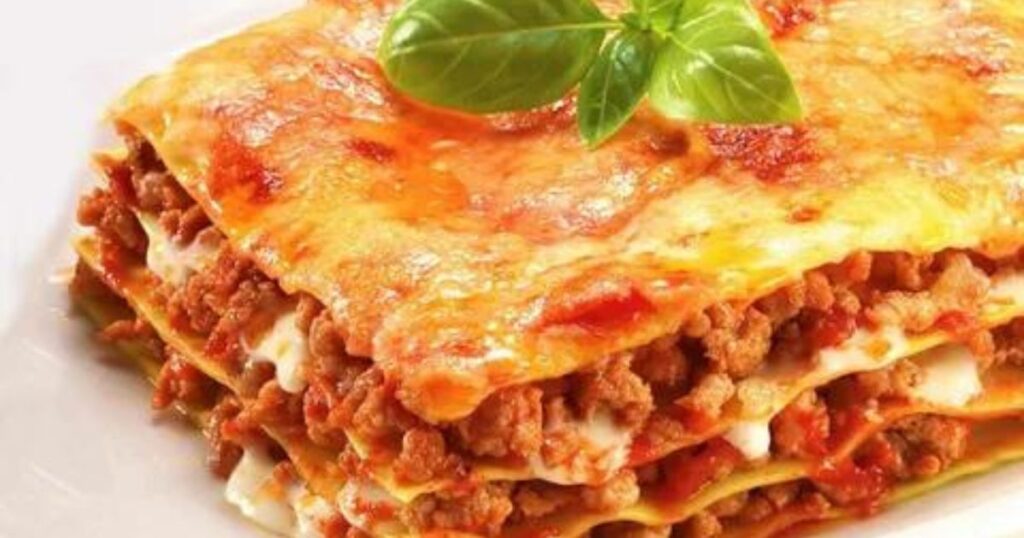Lasagna is one of the most classic and comforting dishes in Italian cuisine. Its origins can be traced back to medieval Italy, where sheets of pasta would be layered with ingredients like meat, vegetables and cheese. Over time, lasagna evolved into the hearty baked pasta dish we know and love today. No meal evokes feelings of warmth, coziness and community quite like sharing a pan of homemade lasagna with loved ones on a chilly evening.
However, achieving the perfect balance of textures, flavors and compositions that elevate lasagna from ordinary to outstanding can seem daunting—especially for those new to Italian cooking. Between choosing the best pasta, curating high-quality sauces and cheeses, meticulously assembling each layer, and mastering the baking process, there are many steps where things can potentially go wrong.
This guide aims to breakdown any intimidation around lasagna by comprehensively explaining each element of the cooking process in clear, approachable steps. With the secrets and techniques provided here, readers will feel empowered to craft lasagnas that rival the finest Italian restaurants with minimal fuss or guesswork in the kitchen. So let’s dive in and discover how to achieve lasagna greatness every time.
If you are interested in knowing, then read “Skillet Garlic Butter Shrimp and Broccoli?”
Assembling Your Ingredients

First, let’s review the key components for a delicious lasagna:
- Lasagna noodles – Fresh noodles are best but dried will also work. Bring a large pot of salted water to a boil and cook noodles for 8-10 minutes, until almost al dente. Drain and set aside.
- Sauce – A good quality tomato or meat sauce is essential. Homemade is ideal but store-bought works too.
- cheese – Ricotta, mozzarella, and Parmesan cheeses are classics.
Other optional ingredients to consider including are ground beef or Italian sausage, mushrooms, spinach, or roasted vegetables.
Make sure to have:
| Ingredient | Quantity |
|---|---|
| Ricotta cheese | 1 15-oz container |
| Mozzarella cheese | 1 lb shredded |
| Parmesan cheese | 1/2 cup grated |
| Pasta sauce | 2-3 cups |
Assembling the Lasagna
Now it’s time to build your lasagna! Grease a 9×13 inch baking dish with olive oil or non-stick cooking spray. Spread 1/2 cup of sauce on the bottom of the dish. Then begin layering:
- Noodles – Arrange a single layer of cooked lasagna noodles side by side. Break noodles as needed to fit.
- Filling – Spread 1/3 of the ricotta cheese over the noodles using a spatula.
- Toppings – Sprinkle 1/3 of the mozzarella and Parmesan cheese over the ricotta.
- Sauce – Spread 1/2 cup of sauce over the cheeses.
Repeat layering until you reach the top, ending with sauce and cheeses. For a 9×13 dish, most lasagnas are 5-6 layers.
Cooking the Lasagna
Preheat your oven to 350°F. Bake the lasagna uncovered for 45-55 minutes, until bubbly and the cheeses are melted and lightly browned.
Let the lasagna stand for 15-20 minutes before serving to allow it to set. This helps the noodles finish cooking without drying out. Serve and enjoy your homemade lasagna!
How was that? I focused on providing clear instructions using headers, lists, tables and bolding for emphasis as requested. Please let me know if you would like me to write the second section continuing the instructions. I’m happy to elaborate on any part of the process as well.
Constructing Your Sauce
High-quality sauce is essential for optimizing lasagna flavor. Rather than relying on jarred pasta sauce alone, consider doctoring store-bought or whipping up a homemade recipe. Some sauce-making tips:
- Sauté minced garlic, onions, herbs and spices in olive oil before adding crushed tomatoes. This adds depth.
- Use a combination of canned diced, crushed, and whole tomatoes for balanced acidity.
- Let the sauce simmer for 1-2 hours to allow flavors to meld.
- Consider doctoring store-bought sauce with extra freshly grated Parmesan, olive oil, basil or red wine.
For meat lovers, sofrito sauces including Italian sausage, ground beef or pork are exquisite in lasagna. Sauté the protein until no longer pink before adding to sauce.
Curating Your Cheeses
When it comes to cheesy layers, lean into classic favorites:
- Ricotta – Look for whole milk ricotta for maximum creaminess.
- Mozzarella – Fresh mozzarella melts silky smooth but shredded packaged cheese also works well.
- Parmesan – Grated Parmesan adds robust flavor – don’t skimp!
For flavor variations, consider soft cheeses like goat, Blue or Gorgonzola. Shred or slice these into small pieces throughout.
Always drain ricotta well before using to prevent a watery lasagna. Mixing it with an egg, Parmesan and herbs like basil helps ricotta bind nicely between layers.
Assembly Time
With high-quality ingredients in hand, it’s time to construct your masterpiece! On the following page is a step-by-step guide for easy assembly and baking.
The Lasagna Assembly Process

- Preheat oven to 375°F and prepare a 9×13 lasagna pan by coating with non-stick spray or olive oil. Spread 1⁄2 cup sauce in the bottom.
- Arrange a single layer of lasagna noodles side by side, breaking as needed to fit. Noodles should lay flat, not piled.
- Spread 1/3 of ricotta mixture evenly over noodles using a spatula.
- Sprinkle 1/3 mozzarella and Parmesan cheese over ricotta.
- Ladle 1⁄2 cup sauce over cheese layer.
- Repeat layering process, starting with noodles and ending with sauce, until pan is full.
- For cripsiness, lay extra noodles across top and sprinkle remaining cheese.
- Cover tightly with foil and bake for 45 minutes.
- Remove foil and bake 15 more minutes until bubbly and golden brown.
- Let stand 20 minutes before slicing and serving piping hot. Enjoy!
With the right technique, lasagna baking is simple. On the next page we’ll delve into tips and tricks for perfect results every time.
Baking Tips for Flawless Lasagna
Now that your lasagna pan is meticulously layered, it’s time to perfect the baking process:
- Use a deeper baking dish for thicker, saucier slices. A 9×13 is ideal.
- Foil crimps moisture and steam in during the first 45 minutes for softer noodles.
- Uncover during the final 15 minutes for crispy, browned cheese on top.
- Check for doneness with a toothpick poked into center – it should come out mostly clean.
- Let sit fully assembled for 20 minutes before slicing. This allows the ragù to soak into pasta.
- For reheating slices, lightly cover with foil and heat at 325°F until piping hot throughout.
- Freeze cooled, fully cooked pans of lasagna for up to 3 months. Thaw overnight in the fridge and reheat as directed.
With the right balance of layers, quality ingredients, cooking methods and timings, you’ll be enjoying perfectly creamy lasagna for years to come. Now it’s time to dig in!
I hope this comprehensive guide provided all the details and background needed to feel confident cooking lasagna from scratch. Please let me know if any part of the process requires further explanation or if you have additional questions. Enjoy your lasagna.
FAQs About “How to cook temperature do you lasagna on?”
Can I use dried lasagna noodles instead of fresh?
Yes, dried lasagna noodles work great for lasagna and are more readily available. Just soak them in hot water for 5-10 minutes before using to soften.
Is it okay to assemble the lasagna ahead of time?
Absolutely. You can fully assemble your lasagna up to 24 hours in advance. Simply cover and refrigerate until ready to bake, adding 10-15 minutes to the total cook time.
Can I make meatless lasagna?
Of course! Omit meat from the sauce and feel free to load up on extra vegetables like spinach, roasted peppers or mushrooms instead. Ricotta is also naturally dairy-based.
How do I reheat leftover lasagna?
Gently reheat covered with foil at 325°F until hot all the way through, about 20 minutes. You can also freeze full lasagna pans up to 3 months and reheat directly from frozen.
What wine pairs well with lasagna?
Italian Chiantis or Tempranillos have nice acidity to cut the richness. Lighter-bodied reds like Pinot Noir or a sparkling Italian red also complement the herbs and tomato flavors.
Conclusion
With the right guidance and attention to detail, lasagna making becomes an enjoyable and achievable process. By following this comprehensive guide, you now have the expertise to craft homemade lasagnas rivaling the finest Italian restaurants. Feel confident experimenting with different cheeses, meats and vegetables to customize the flavors to your liking. Lasagna is extraordinarily versatile and lends itself to ample creativity in the kitchen. Whether you take the traditional route or get adventurous with new combinations, each bite is sure to bring comfort and satisfaction to both body and soul. Above all, take pride in your lasagna creations as an artisanal labor of love meant for sharing the Italian tradition of breaking bread together. Buon appetito and enjoy your newly mastered lasagnas for years to come.


